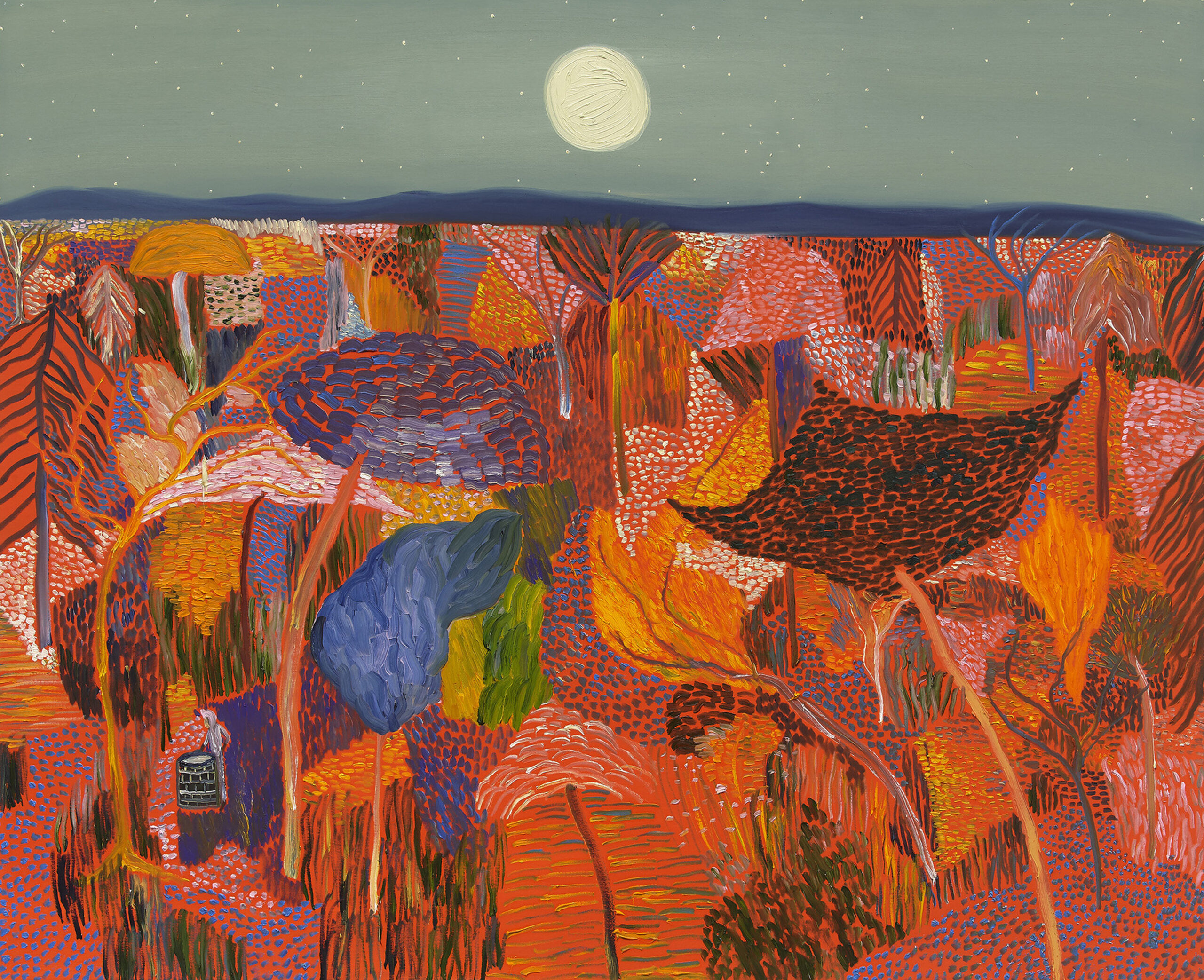
Alasdair Nichol, deputy chairman of Freeman’s | Hindman auction house, calls it a “ghoulish” area, but it is one that he knows exists: “There often is a death watch for older artists and those believed to be in poor health.” Auctioneers, art dealers and gallery owners and most especially art collectors pay close attention to obituaries, based on what he called a popular fallacy that the prices for artists’ works will rise significantly on their passing. “A person I know has been buying up Richters”—referring to the 93-year-old German painter Gerhard Richter—“I assume with the intention of selling these things when he dies,” Nichol told Observer, adding that he remembers “a mini-boom” for memorabilia related to the singer David Bowie “prior to his death” in 2016.
He isn’t alone in seeing this focus on the age and health of artists who are well on in years. Betty Krulik, a private art dealer in New York City and former head of the paintings department at Christie’s, and Anthony Grant, a private dealer in Manhattan and former vice chairman of contemporary art at Sotheby’s, saw this phenomenon in the past and present. “There is a mercantile attitude about older artists,” Grant said, as dealers look to sell and collectors seek to buy before their death takes place. “People say, ‘the artist is getting older, so I better get some of his work before he dies and the price goes up,’” Krulik confirmed.
Zachary E. Wirsum, senior vice president and head of postwar and contemporary art at Freeman | Hindman, told Observer that a few years ago he had been “working hard” to arrange a consignment of a landscape painting by Richard Mayhew (1924-2024) but “was told by the potential consigner that he wanted to wait until the artist died.”


It is the Vincent van Gogh story—that artists might starve during their lives, but when they die, their work becomes sought-after and valuable. Certainly, there are instances when prices escalate dramatically upon an artist’s death, one of the most notable examples being the work of Canadian artist Matthew Wong (1984-2019), whose colorful, dreamy landscape paintings garnered considerable praise in the few years he showed his work in galleries in New York where they sold for tens of thousands of dollars. The year following his suicide, Sotheby’s sold his 2018 painting The Realm of Appearances for $1.82 million, well above the auction house’s $60,000-80,000 estimate, and Phillips auctioned another 2018 painting, River at Dusk, for $4.86 million, four times its estimate. Lightning does strike.
Death, however, is not a good predictor of value. Alasdair Nichol is correct in that this is a “ghoulish” subject—and “doesn’t necessarily have a positive impact” on an artist’s prices and market, according to Richard Wright, chief executive officer at Rago/Wright auctions. “In fact, it is more correct to say that when an artist dies, his market tends to die with him.” At least for a while. The prices for works by such luminaries as Georgia O’Keeffe, Pablo Picasso, Robert Rauschenberg, Norman Rockwell, Andy Warhol and Andrew Wyeth slumped or were stagnant for a number of years following their deaths but later rebounded.
For instance, in 1979, the year after Rockwell died, his painting The Bookworm sold for $65,000. It wasn’t until the 1990s that prices reached the high six figures and, following the 1999-2001 nationwide touring retrospective “Norman Rockwell: Pictures for the American People,” prices surged, with his 1943 Rosie the Riveter earning $4.95 million at Sotheby’s in 2002 and his 1957 The Rookie fetching $22.5 million at Christie’s in 2014. Anyone who had rushed to buy Rockwell’s work prior to his 1978 death or shortly after would have had to wait quite a while for their dreams of riches to be realized.
A major reason for prices of paintings by Rockwell, O’Keeffe, Picasso, Rauschenberg, Warhol and Wyeth staying flat for so long is that so many people who had one rushed them to galleries and auction houses, effectively overwhelming the market. “A lot of people speculate that an artist’s death results in an upward tick in pricing for their works,” said Daniela Lazo-Cedre, senior specialist in 20th and 21st century art at Bonhams, which results in a flood of material to the market.” A glut creates uncertainty about how much material is out there and how much each piece should cost. “People come out of the woodworks with consignments when an artist dies,” dealer Katherine Degn, former director of New York’s Kraushaar Galleries, told Observer. “Flooding the market is never a good idea.”
And it isn’t just collectors who flood the market; heirs do, too. The widows of sculptors Sir Jacob Epstein, Frederic Remington and Julio González inadvertently hurt the market for their late husbands’ works when they began recasting their pieces—failing to keep good records on how many reproductions were made with Epstein and Remington, failing to label the recasts as posthumous with González. The son of painter Thomas Hart Benton put many of the original works by his father that were in his possession on the market at the same time shortly after the artist’s death in 1975. The market for Benton’s work recovered, but it took about 15 years.
“Whether or not artists’ works rise or decline in value depends a lot on how they have organized their estates,” New York art advisor Susan Brundage told Observer. It also depends on how those in charge of their estates tend to them. “Children of artists may not know what to do with the artworks. They may fight about them or dump them on the market.”
Presumably, scarcity would suggest that those still available would increase in value, but that kind of economics doesn’t always hold sway in the art trade. While alive, an artist continues to hold the promise of creating something of significant interest, and some artists have big personalities that are part of the marketing and sales of their work. Zachary Wirsum noted that it often helps to have “the artist around to control marketing. In fortunate circumstances, there is an estate that will promote the artist, but the motivation on the part of galleries to display and sell the work of artists may not be as aggressive if they’re not around to push their dealers.”
Once dead, that promise is gone and the artist is now reassessed in terms of a “legacy”—that person’s place in art history and his or her influence on other artists of that time or subsequently. The artist’s importance is likely to be measured by exhibitions at galleries and especially museums, as well as through publications that make the case that the artist is a major figure in culture. It takes time, often years, for the market to absorb all the artworks that were sold following an artist’s death and, during that time, a reevaluation needs to happen.
That doesn’t just happen but is the result of effort by family members, dealers, estates, scholars and museum curators who make the case—through exhibitions and publications—as well as well-planned sales for the artists. Estates often have quite a few artworks to sell but, Wirsum said, they may not be the best at representing the work. First, they are objects that did not sell, perhaps because they are not as good as those that had sold and they may be more experimental and “less iconic” works. Promoting those pieces may not be to the artist’s advantage.
Some artists don’t seem to make the cut. Richard Wright noted that painter Ed Paschke’s (1939-2004) “shows did very well during his lifetime, but his estate has struggled.” Betty Krulik identified artists Chaim Gross (1902-91) and David Levine (1926-2009) as “very good figurative artists who did fine during their lifetimes, but they were not household names or great luminaries.” The verdict would seem to be that these three were all minor talents. Like Richard Wright, she said that “most artists’ markets die with the artists, unless there is a dealer behind them who’s holding the flag high.”


Achieving posthumous recognition can be an uphill battle. Kayla Carlsen, director of the Albany Museum of History & Art and former head of American art sales at Sotheby’s, said that galleries that represented now deceased artists go out of business, or they lose interest in artists who are no longer around to produce art. “Tastes change, and we live in a time when people are fixated on contemporary artists.” It is often the case that the principal buyers of living artists are collectors who are the same age as the artists. Older people are not as avid collectors as they had been earlier on, and the job of dealers and the estates of artists is to convince a new generation that such-and-such talents need to be looked at again.
None of this is news to Zachary Wirsum, whose father, Karl Wirsum (1939-2021), was a painter and sculptor “who predominantly supported himself during his career through the sale of his art, although he also taught at the Art Institute of Chicago.” After his death, there was a “dip in the market, less interest,” which he thought could be corrected by a more aggressive promotion by the estate, “but that would be a full-time job for me, and I already have a full-time job.” Last year, New York’s Derek Eller Gallery and the Matthew Marks Gallery partnered to hold a show of Karl Wirsum’s paintings and sculptures, “which was a success critically, less so financially.”
More for art collectors
<




